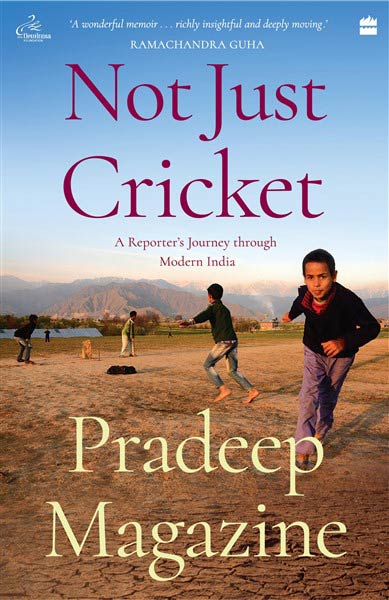(The following extract is from the chapter titled 'Great Comeback, Great Fall - Ganguly's Return')
Much like his first comeback in 1996, luck may have played a big role in Ganguly’s third coming. BCCI president Sharad Pawar also served as a minister in the central government, a government that was being backed by the Left Front from Bengal. He may have thought it wise to please these allies now that Greg was no longer seen as panacea for all the ills plaguing Indian cricket.
When the squad for the Tests in South Africa was announced, Ganguly’s name was on the list. This time there was unanimity both in the public and the media that Ganguly had been treated badly and deserved another chance. The joke was now on those who had backed Greg and scoffed at Ganguly.
However, despite agreeing on Ganguly’s inclusion, the media was divided on Greg’s term as the Indian coach. In my memory, I had never seen the Indian media split into two factions like this. The pro-Greg lobby even accused those in the other camp who were always critical of Greg of ‘sabotaging’ Indian interests.
Ganguly had remained far removed from these games in the media and had instead focused on preparing for his comeback. His efforts paid off, and in his remarkable return in South Africa, he scored a half century and played a pivotal role in India’s first-ever Test win in the country. Soon he was again one of the mainstays of the Indian batting line-up, being as successful as he had been when at his peak.
Ganguly had kept in mind the support some of us in the media had lent him while he was fighting his battles with Greg. After his successful Test return, he sent me a text message saying, ‘I will never forget the support you gave me.’
When Ganguly was on a tour of England with the Indian team, I spent a few days in his home town listening to stories about his strong-willed character and grit, and the efforts he put in to better himself and prove his detractors wrong. I visited his home again and his mother showed me the same affection as before. The purpose of my visit was to collect material for his biography I intended to write, for which he had promised me full access for my research.
I heard from his parents how, at a time when the world believed his time was up, their son had whipped himself up into a frenzied schedule that had left them bewildered and worried. His father, Chandidas Ganguly said, ‘One night I heard some loud sounds and discovered him practising his shots in his room.’ The parents wanted him to relax and not react in such an illogical manner to his being dropped from the Indian team, but Ganguly didn’t pay them any heed, continuing with his ‘insane’ training. He would spend the entire day working on either his batting technique with his coach or his fitness in the gym.
The Bengal team trainer, Chinmoy Roy, was helping Ganguly train. He told me that initially Ganguly did not believe a skill-based sport like cricket needed the kind of fitness regimen needed in other sports such as football and athletics: ‘He said that even Sachin did not do much fitness training.’ Roy remembers Ganguly’s performances on the Beep test, which measured one’s cardiovascular endurance, was quite ordinary. ‘He would run out of breath too quickly,’ said the trainer.
Ganguly’s attitude to his training changed after three months out of the Indian side. Then began the real training that transformed Ganguly from a laidback cricketer into a lean, strong athlete. Roy says he convinced him that the most glaring shortcoming he had was lack of speed and agility, especially turning speed, because of which he could not convert singles into twos while running between the wickets. It also led to his low-energy displays in the outfield as well.
Roy recounted two incidents that showed how much Ganguly missed not being part of the Indian team and his determination to make a comeback. ‘We had a TV in the gym,’ he said. ‘India was playing Sri Lanka at home in 2005. I could sense the disappointment in his eyes as Irfan Pathan walked in to bat at number 3. Disagreeing with the decision, he turned his back to the TV and increased his workout intensity.’
The second anecdote is about the time India announced its One-Day team to South Africa. Ganguly believed that he would be chosen. On finding his name missing, ‘anger and disappointment was written large on his face’, recalled Roy. ‘I thought he was in no mood to train. But he trained as if his life depended on it.’ At one point a drained Ganguly lay on the ground, close to throwing up from the exertion. When Roy suggested they pack up, he heard an expletive from the former captain for the first time: ‘F…k no, I will do more. I have to come back. They can’t keep me out.’
When the call finally came, he was mentally and physically ready, and motivated to give his best. While the world was focused on what reception he would get from the coach, Ganguly instead had his sights set on not letting this one last opportunity slip from his grasp.
The one trait I found most common among successful sportspersons is self-confidence. Ganguly displayed this characteristic in abundance. In the meetings I had with him during his period of exile from the team, he talked about his comeback as if it was an inevitability no one could prevent. Not only was he sure of his return, he was equally sure that he would make big runs once again.
(Extracted with permission from HarperCollins India)
Not Just Cricket: A Reporter's Journey through Modern India
By Pradeep Magazine
Published by HarperCollins Publishers India
Pages: 351, price Rs 599





